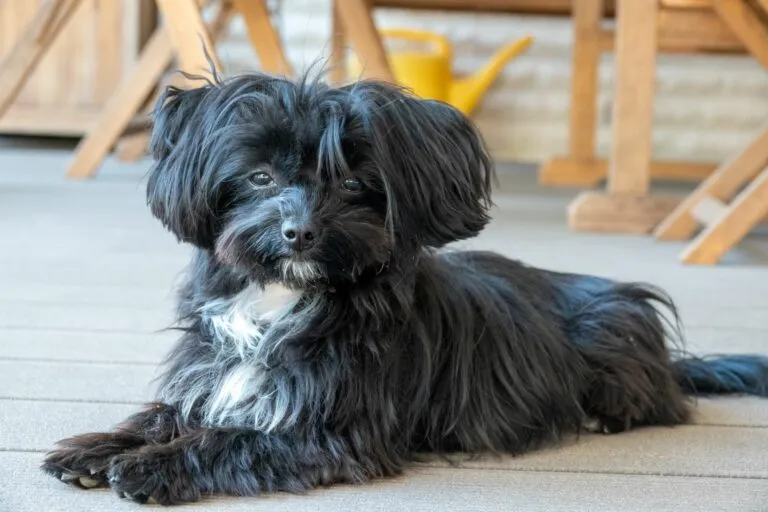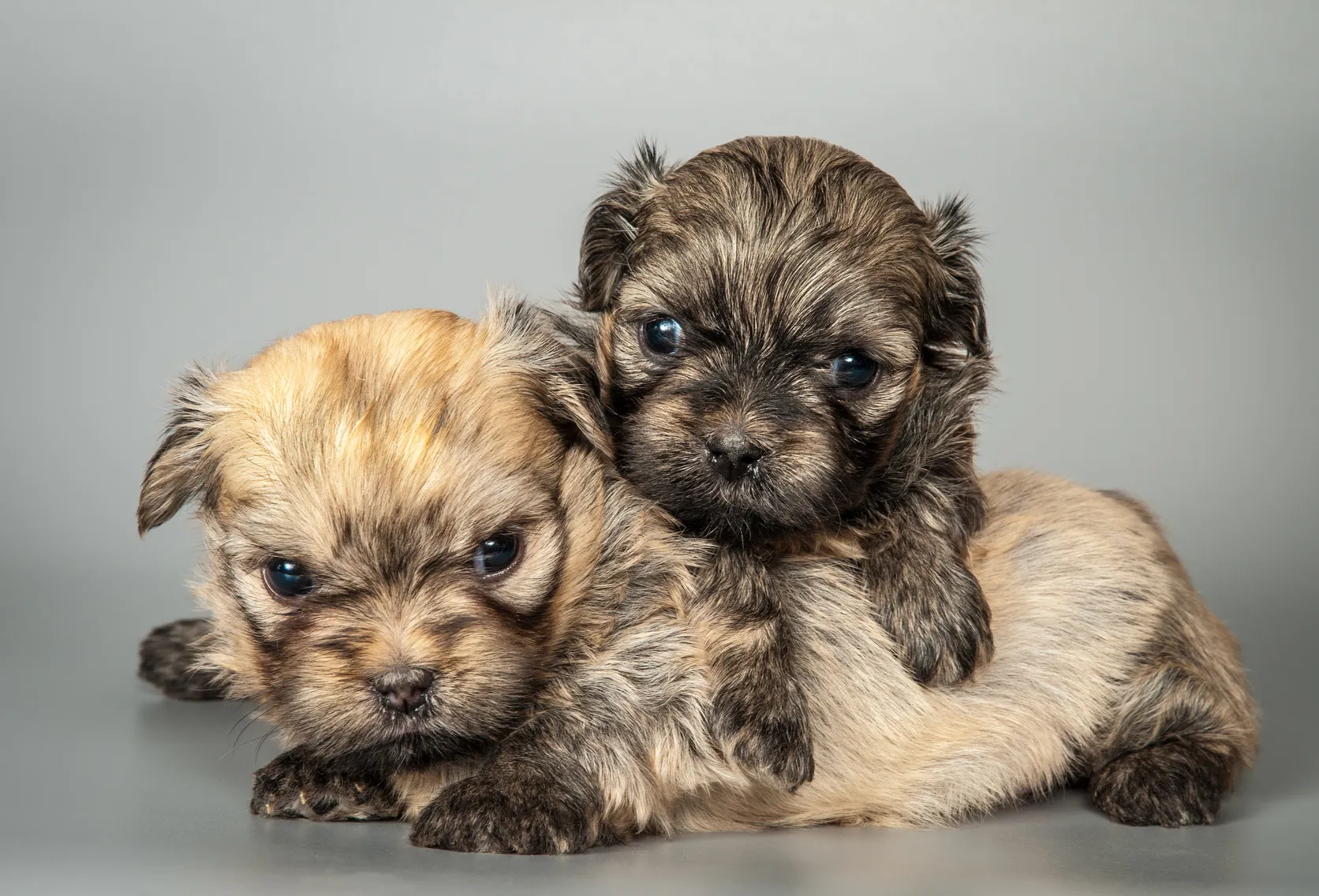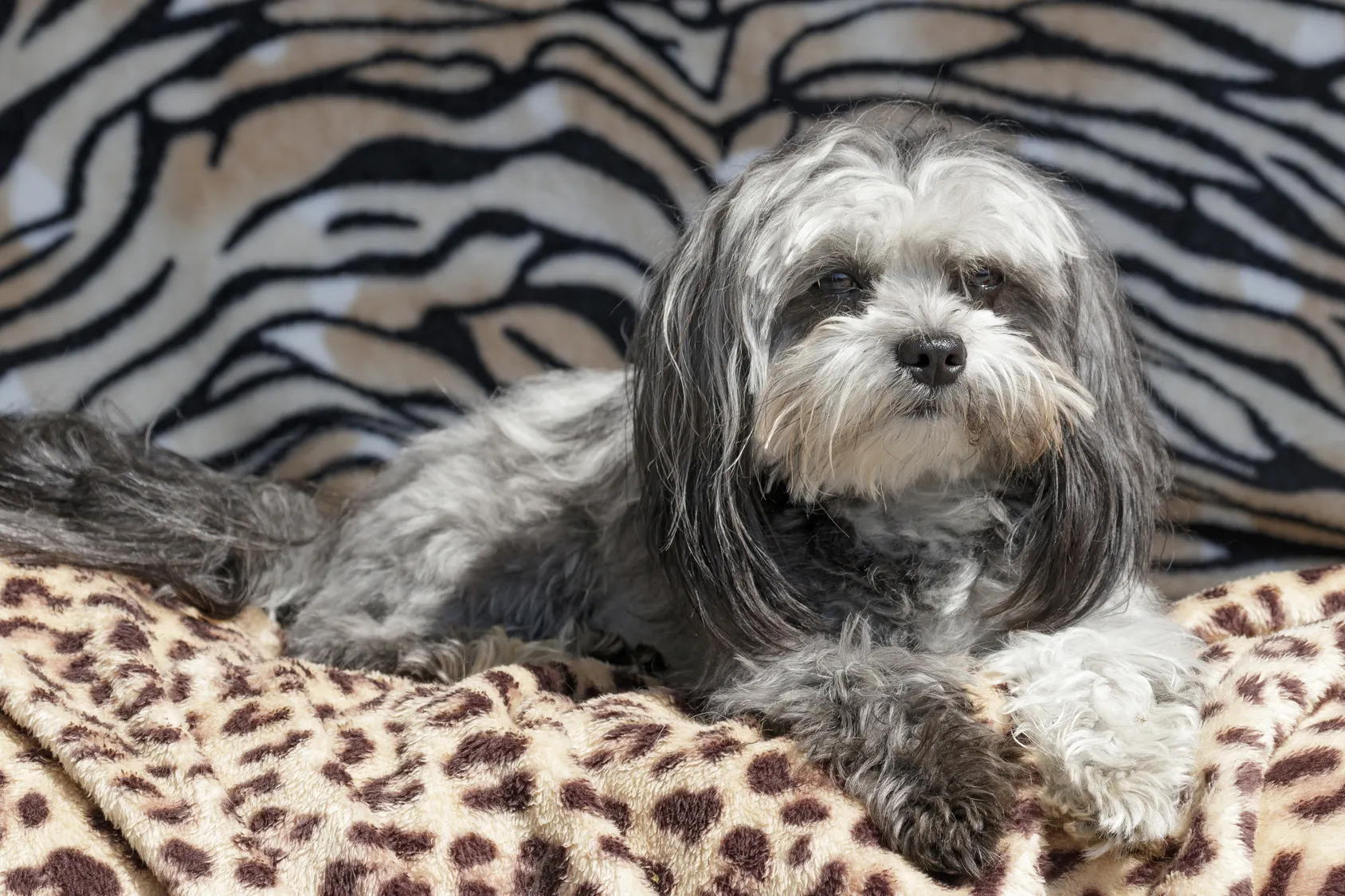Beagle
The Beagle's short legs can be deceiving – this medium-sized dog keeps you on your toes and is always full of surprises! This friendly breed is active, fearless and extremely clever.
These colourful lapdogs from Russia are enjoying increasing popularity outside of their country of origin. It's no surprise, since the Bolonka Zwetna brings its owners plenty of joy with its cheerful, easy-going character.

© karegg / stock.adobe.com
These little tousle-haired dogs have a very even-tempered nature. They are always friendly and always appear to be in a good mood – as long as they are in close proximity to their owner. These affectionate dogs love playing and cuddling with their family and dislike being alone. This makes the Bolonka Zwetna unsuitable for people with intense work commitments, unless it is possible for them to take this little dog to work. Irritating yapping and aggressive behaviour are completely alien to these intelligent, self-aware dogs. Although they don’t need much space to be happy, they demand a lot of love and attention from their owners. If they feel assured of this love, they can be taken everywhere without any problems. They are friendly and open towards strangers and children. Even living with cats or other pets is generally no issue for these sociable dogs.
Despite its short legs, it is a real bundle of energy outdoors and has a lively temperament and impressive endurance. The active Bolonka Zwetna should get at least one to two hours of exercise per day. These playful Russian dogs love outdoor walks, retrieving sticks and catching balls. These cheerful canines are enthusiastic participants of dog sports like agility or clicker training. Training, which involves teaching the most important commands, is generally no issue for these docile and people-focused canines. Even living with cats and other pets is incredibly harmonious following appropriate socialisation.
Not just its friendly nature, but its cute appearance and the fact that it doesn’t moult despite its abundant coat makes the Bolonka Zwetna a well received guest everywhere it goes. Hence, even allergy sufferers or clean freaks can breathe easily with a Bolonka at home.
The thick fur of these little pedigree dogs is long, shiny and frames the entire body with long, heavy curls or waves. They cannot be harmed by wind and bad weather thanks to the thick undercoat. Despite its small size of 20 to 26cm, the Bolonka Zwetna is very robust. Its little body is gently elongated and harmonious in build. Its head appears bigger than it is due to the slightly raised, medium-sized lop ears. The whiskers and goatee are its main characteristic features. The round, dark button eyes with which it loyally and attentively observes its owner lend it its typical cute facial expression. A scissor bite is desirable for the teeth. Overshot or undershot bites are still permitted.
The Bolonka is very diverse. In terms of colour, all varieties and combinations – including white and checked – are permitted. Small white markings on the chest and toes are permitted as long as the proportion of white is not above 20%. Black Bolonka Zwetnas have a black nose, but this changes to the colour of the fur in coloured dogs.
Despite its moderate need for exercise, which should be pursued for at least one to two hours per day, the Bolonka Zwetna can be kept in a smaller apartment without any problems. These toy dogs don’t need much space in the home – after all, they are happiest lying right at their owner’s feet.
 © Ulf / stock.adobe.com
© Ulf / stock.adobe.com
The Bolonka Zwetna comes from Russia and for a long time was solely bred and kept in its country of origin and the countries of what was later the Soviet Union. Up until now, this Russian breed is still not recognised by the FCI international umbrella association (Fédération Cynologique Internationale). The Russian Kennel Federation (RKF), which represents Russia in the FCI, guards the breed standard and assigns the Bolonka Zwetna to FCI group 9. It has recently been recognised as an independent dog breed in different national associations.
Targeted breeding of the Bolonka Zwetna began in Russia in the 1950s when the wish for a national toy dog breed was expressed. After the Second World War, interest in little companion dogs increased. Legally importing dogs from abroad was almost impossible under the Soviet regime, therefore fans of small and toy dogs had to make do with the breeds available in Russia.
The white Bolonka Franzuska, which was kept as early as the 18th century as a companion and living gem of fine society, is an ancestor of the Bolonka Zwetna. Translated as French lapdog, the Bolonka Franzuska presumably entered the country due to the close contact between the French and Russian nobility at this time. The story has it that King Ludwig IV gave this little white four-legged friend to the Russian tsar as a gift. More Bolonka Franzuska dogs probably made their way to Russia with Napoleon and his army.
In the 1950s, Russian breeders paired the Bolonka Franzuska with other small breeds following the death of many dogs during the wars. The Bolonka Zwetna was the result of pairings with dog breeds like the Pekinese, Shih Tzu, Bolognese and Lhasa Apso. Thanks to its ancestor, the Bolonka Franzuska, it is mainly distinguished by its colourful coat, which is today found in all varieties and combinations apart from pure white. In 1966, the first official breed standard was finally presented and acknowledged by the Cynological Council of the Soviet Ministry of Agriculture. Differences in physique that have developed since the start of official breeding have certainly arisen purely by chance and have consolidated over time. However, it would be incorrect to speak of a fixed ‘breed type’ with this breed. There are still strongly divergent types of Bolonka Zwetnas found at exhibitions in different union republics.
Despite the lack of recognition from the FCI, breeding the Bolonka Zwetna has long since spread beyond the borders of Russia. Hence, it shouldn’t be too difficult to find a good, reputable breeder within easy reach. Even in animal shelters there are always Bolonka Zwetnas hoping to find a new home. It’s definitely worth a visit.
If you’re interested in a puppy, you should buy from a reputable breeder who prioritises the dog’s health over a quick buck. Due to the expensive vet bills, a bargain without documentation often proves to be a cost trap. Hence, you’re better off investing directly in a healthy dog, because this is the only way to prevent hereditary diseases such as hip dysplasia (HD) from affecting your beloved pet.
Nevertheless, your dog can of course be affected by infections, injuries or other ailments. The sooner such complaints are recognised, the better the chances of recovery. Adequate care, species-appropriate housing and regular veterinary check-ups are therefore very important. Vaccinations can prevent several diseases. You’re best off finding out from your breeder and vet about the recommended vaccination measures.
The right diet makes a vital contribution to keeping your dog in good health. Hence, make sure your dog is fed in a suitable and species-appropriate way. Your dog’s age, weight and activity level must be taken into consideration when choosing the right food. Different types of food for puppies, adult and senior dogs aren’t sales strategies from manufacturers, but make absolute sense. For example, puppies need sufficient calcium and phosphorous for healthy bone growth. In contrast, an excessive amount of these minerals would harm an adult dog. If you have bought your dog from a breeder, you will probably first continue to use the puppy food they provide.
Good puppy food is characterised by a high proportion of meat and an appropriate amount of minerals and nutrients. It should contain no artificial additives, flavourings, colourings or preservatives. Bolonka Zwetnas are adults at the age of nine or ten months and can gradually be introduced to adult food. This means you don’t just change the content of its food bowl, but the quantity of meals per day too. Whilst a puppy should receive around five to six meals per day due to its innate tendency to suffer from hypoglycaemia, two to three meals are sufficient for adult Bolonkas. If the composition of the food is right, i.e. plenty of meat (approx. 70%), some vegetables (approx. 25%) and a little grain (5%), you can safely do without additional vitamin and mineral supplements. After all, not only too little but too much of certain nutrients can harm your dog.
After eating, you should definitely treat your dog to a little rest to give it time for digestion. Your dog shouldn’t play or go on walks with a full stomach.
 © Blackosaka / stock.adobe.com
© Blackosaka / stock.adobe.com
Along with daily walks and cuddles, Bolonka owners of course need to devote time to grooming their tousle-haired friends. Despite its length, the Bolonka’s fur is very low-maintenance. Thoroughly brushing it every two to three days is sufficient to protect it from matting and to remove dirt and dust. In addition, the eyes, ears and claws should be regularly checked and cleaned to prevent diseases or infections. The Bolonka Zwetna’s teeth require particular attention. They should be examined for possible foreign particles or tartar, which can cause severe toothache. Discolouration of the teeth, inflamed gums or bad breath can be indications that something is wrong. In this case, you’re best off seeing your vet soon to investigate the cause.
With the right grooming, sufficient exercise and plenty of love and attention, your Bolonka Zwetna will feel very happy. First-time or experienced dog owners, singletons or families with children, renters of small apartments or owners of luxury villas will certainly find in this easy-going and cheerful dog a loving companion to bring plenty of joy to their lives.
The Beagle's short legs can be deceiving – this medium-sized dog keeps you on your toes and is always full of surprises! This friendly breed is active, fearless and extremely clever.
The Golden Retriever is still one of the most popular dog breeds, especially with families. It is defined not just by its docility, but shows numerous other qualities too. Read in the following article everything you need to know about the Golden Retriever.
The German Shepherd is one of the most popular utility dog breeds in the world, though the willing-to-learn and people-focused nature of these versatile dogs also makes them suitable for family life.